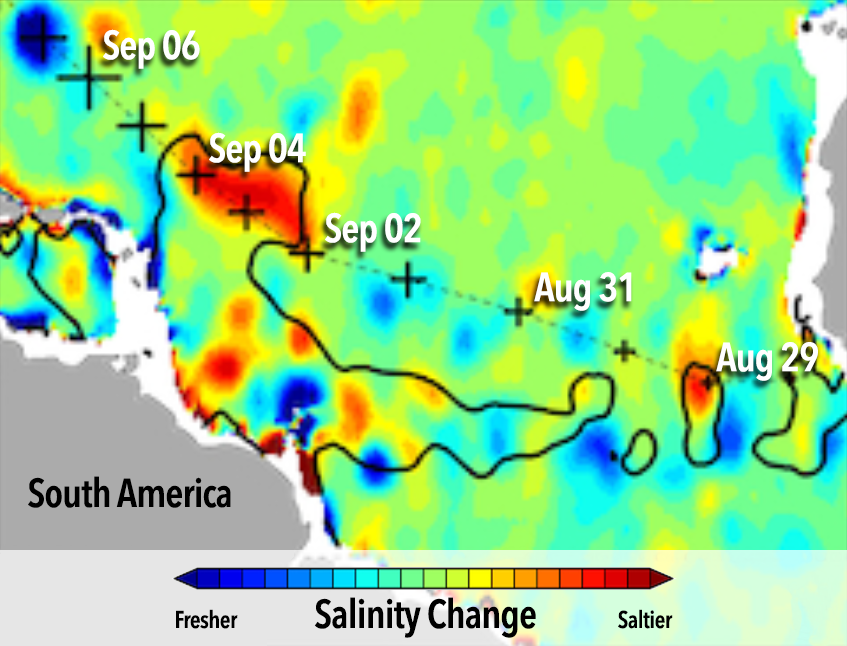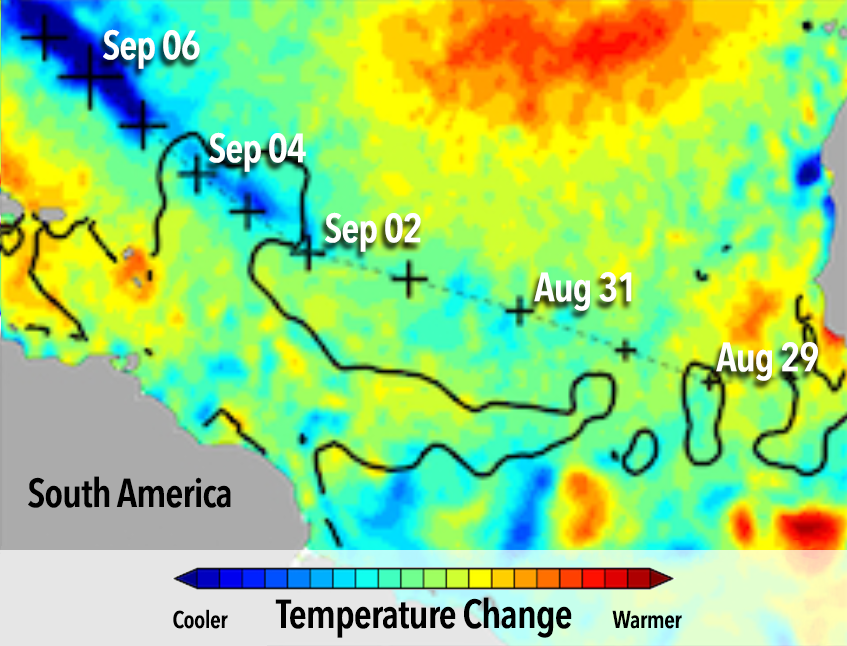Watching hurricanes slowly creeping toward land can be alarming. However, it is also important to track these storms' path over the ocean, which greatly influences their strength.
Satellite data such as sea surface temperature and height help scientists understand the ocean heat content available for storm intensification. Current forecasting tools do not include the effects of salinity, but new research shows that low sea surface salinity caused by the outflow of major rivers can have a considerable impact on how storms intensify. Why?
Outflow from rivers can form and maintain thin layers at the sea surface. Underneath, there can be a "barrier layer" where salinity changes dramatically, isolating the upper ocean from water below. This type of stratified water column can intensify passing hurricanes. How?
The answer is heat. Thinner surface layers warm up more quickly than surrounding waters. Not only that, the underlying barrier layer makes "stirring up" the water column by hurricanes - which brings up cold water in most places – more difficult. So, monitoring how certain river plumes change over time is key to understanding interactions between the ocean and hurricanes.
Use the tool below – based on a 5-year study by Fournier et al. (2017) – to investigate the characteristics of the Amazon/Orinoco plume during 2010 and 2014. Located in the eastern Caribbean Sea, the study area has been shown to lie directly in the path of many Atlantic hurricanes. Use the buttons to toggle between years or among data types.


This study investigates sea surface salinity and sea surface temperature variations in the tropical Atlantic east of the Lesser Antilles, a region where freshwater advection from the Amazon and Orinoco Rivers - the Amazon-Orinoco Plume - may potentially impact air-sea interaction. Persistent sea surface temperature gradients are often found near the plume edge, which may have implications for ocean-atmosphere coupling associated with atmospheric convection.
Fournier, S., Vandemark, D., Gautier, L., Lee, T., Jonsson, B., and Gierach, M.M. (2017). Read the full paper.
The evolution of three successive hurricanes (Katia, Maria, and Ophelia) is investigated over the river plume area formed by the Amazon and Orinoco river outflows during September of 2011. The study focuses on hurricane impacts on the ocean structure and the ocean feedback influencing hurricane intensification.
Androulidakis, Y., Kourafalou, V., Halliwell, G., Le Hénaff, M., Kang, H., Mehari, M., Atlas, R. (2016). Read the full paper.
At its seasonal peak the Amazon/Orinoco plume covers a region of 106 km2 in the western tropical Atlantic with more than 1m of extra freshwater, creating a near‐surface barrier layer that inhibits mixing and warms the sea surface temperature to >29°C. Here new sea surface salinity observations from the Aquarius/SAC-D and SMOS satellites help elucidate the ocean response to hurricane Katia, which crossed the plume in early fall, 2011.
Grodsky, S., Reul, N., Lagerloef, G., Reverdin, G., Carton, J., Chapron, B., Quilfen, Y., Kudryavtsev, V., and Kao, H. (2012). Read the full paper.